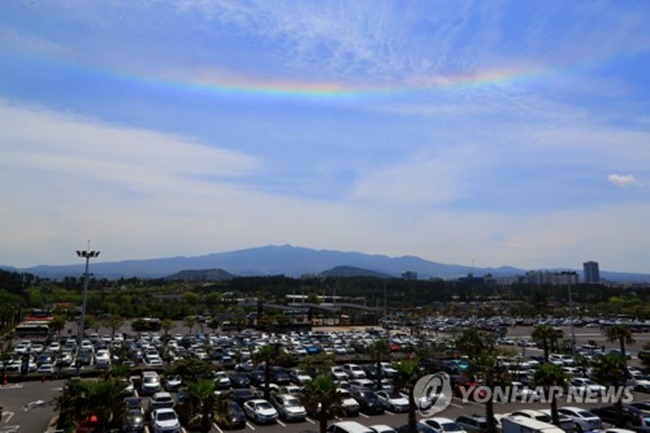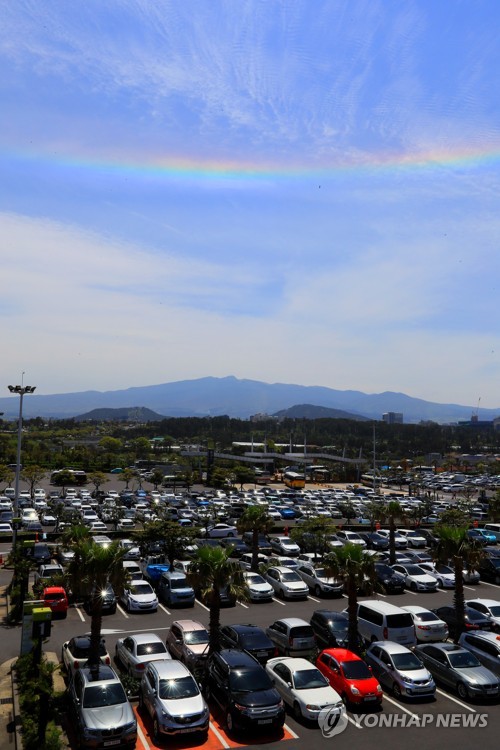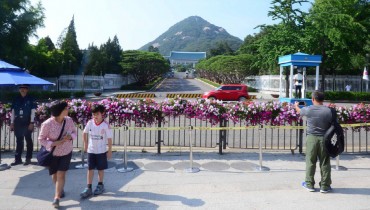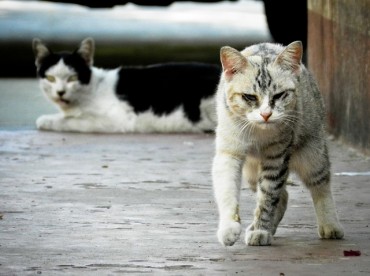
This photo, taken on April 27, 2017, shows iridescent clouds hanging above Jeju International Airport on South Korea’s largest resort island of Jeju. (Image: Yonhap)
JEJU, South Korea, April 28 (Korea Bizwire) – A spectacular display of light was spotted Thursday in the sky over South Korea’s southern resort island of Jeju as residents on the island were dazzled for the second time this year by what is called the phenomenon of cloud iridescence.
The Jeju Meteorological Administration said iridescent colors, or rainbow colors within clouds, appeared in the sky over the island for almost the entire noon hour. They came almost two weeks after a similar phenomenon was reported, the first this year.
Iridescent clouds are formed by tiny ice crystals or water droplets in the air that cause light to be diffracted – spread out – creating a rainbow-like effect. The term comes from Iris, the Greek personification of a rainbow.
Iridescence is usually seen in high and mid-level clouds including thin cirrostratus, cirrocumulus and altocumulus clouds.
On the island, the fairly uncommon phenomenon was observed for 25 minutes on June 16, 2001, marking its first advent since Jan. 24, 1959, when it was previously spotted.

Iridescent clouds are formed by tiny ice crystals or water droplets in the air that cause light to be diffracted – spread out – creating a rainbow-like effect. The term comes from Iris, the Greek personification of a rainbow. (Image: Yonhap)
The island had four cases of the phenomenon in 2011, three in 2012, and four in 2013 before it was sighted for 10 minutes on Nov. 19, 2014, and for one hour on April 12 this year.
(Yonhap)






